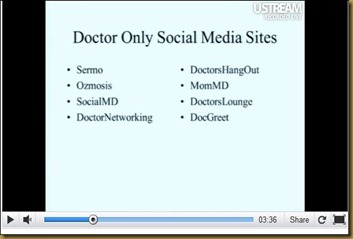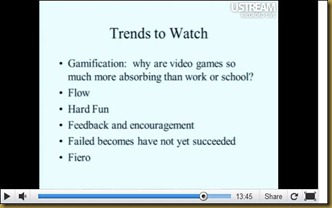
I have read that medical blogging has changed. The bloggers posting clinical cases and clinical information have declined, many (like life imitates art) are retiring, conflicted about HIPAA and privacy requirements.
Caseblog points out the 18 “never say'” items similar to the old bad 8 words of the 70s on television.
They are:
List of 18 Identifiers: (some of these were new to me)
1. Names;
2. All geographical subdivisions smaller than a State, including street address, city, county, precinct, zip code, and their equivalent geocodes, except for the initial three digits of a zip code, if according to the current publicly available data from the Bureau of the Census: (1) The geographic unit formed by combining all zip codes with the same three initial digits contains more than 20,000 people; and (2) The initial three digits of a zip code for all such geographic units containing 20,000 or fewer people is changed to 000.
3. All elements of dates (except year) for dates directly related to an individual, including birth date, admission date, discharge date, date of death; and all ages over 89 and all elements of dates (including year) indicative of such age, except that such ages and elements may be aggregated into a single category of age 90 or older;
4. Phone numbers;
5. Fax numbers;
6. Electronic mail addresses;
7. Social Security numbers;
8. Medical record numbers;
9. Health plan beneficiary numbers;
10. Account numbers;
11. Certificate/license numbers;
12. Vehicle identifiers and serial numbers, including license plate numbers;
13. Device identifiers and serial numbers;
14. Web Universal Resource Locators (URLs);
15. Internet Protocol (IP) address numbers;
16. Biometric identifiers, including finger and voice prints;
17. Full face photographic images and any comparable images; and
18. Any other unique identifying number, characteristic, or code (note this does not mean the unique code assigned by the investigator to code the data)
bleep,bleep,bleep,bleep,bleep,bleep,bleep,bleep,bleep bleep,bleep,bleep,bleep,bleep,bleep,bleep,bleep,bleep.
Count them, there are (bleep) 18 !
Are the standards different for small practices and large institutions? Reality suggests this to be true:
There seems to be a discrepancy of the methods employed by doctors and institutions when using social media. We tell doctors: "never answer patient questions on Twitter". Yet, Cleveland Clinic runs regular Twitter chats soliciting patient questions which are then answered by doctors and healthcare personnel. Mayo Clinic and other institutions do the same.
A blog is your notebook for lifelong learning
Don't forget the most important thing: A blog is your notebook for lifelong learning. Doctors learn from their patients every day. Patients learn from their doctors every day too. Both groups must try their best to excel in the joint quest to achieve the best possible outcome.
Social Media in Medicine is particularly prevalent in the Emergency Department. Perhaps this is what ED physicians do during a quiet moment, between entries in the EMR. This should not be surprising since ER medicine reflects reality. The interface of what we plan and what happens in life while we plan it. Dramatic, crises, no one goes to an ER willingly, to wait, to see an unknown doctor unless uninsured or by other circumstance unable to make it to the doctors office during regular hours, due to transportation problems, and a simple fact that most ERs will see you no matter what to determine if it is safe to send you home. Most ERs are on a public transportation route.
Whether you are a blogger or a reader, perhaps these features will keep you focused on the never say words, or who is blogging, why and where of it all.













